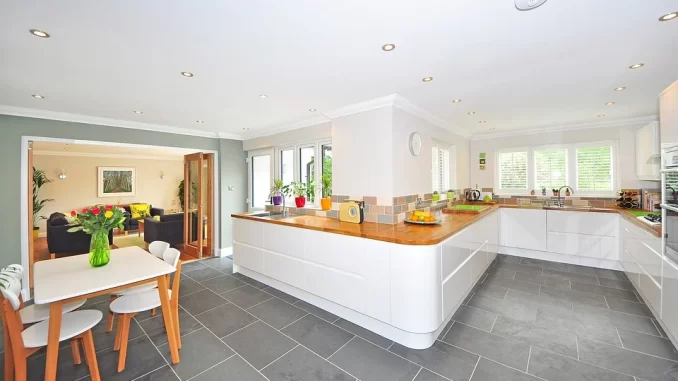
Transforming your kitchen not only revitalizes your space but also enhances the overall value and functionality of your home. Engaging a professional kitchen remodeler can make this complex process seamless and effective. This article delves into the key components of kitchen remodeling, from bespoke cabinets to innovative designs, providing you with the insights needed to embark on your renovation journey.
1. Kitchen Remodeler: Your Project Partner
Choosing the right kitchen remodeler is crucial for the success of your project. A professional remodeler brings expertise in design, construction, and project management, ensuring that your vision for the kitchen comes to life efficiently and beautifully.
Why Use a Professional:
- Expert Guidance: Benefit from their in-depth knowledge of materials, trends, and solutions that fit both your budget and style.
- Quality Workmanship: Professional remodelers deliver high-quality results that adhere to current building codes and standards.
- Project Management: They handle all aspects of the project timeline, from procurement and installation to the final touches, minimizing stress and disruption to your daily life.
Professional Tip: Check the remodeler’s credentials, reviews, and portfolio before hiring to ensure they align with your expectations and style preferences.
2. Kitchen Cabinets: The Foundation of Style and Function
Cabinets are not just storage solutions; they are central to the design and functionality of your kitchen. Whether updating your cabinets or installing new ones, quality craftsmanship and materials are paramount.
Considerations for New Cabinets:
- Material Quality: Opt for materials that offer durability and aesthetic appeal, such as solid wood, plywood, or high-quality laminates.
- Customization Options: Customize your cabinets to meet specific needs and preferences, including dimensions, finishes, and hardware.
- Space Optimization: Design cabinets that enhance storage capacity and accessibility, incorporating features like pull-out shelves, lazy Susans, and integrated organizers.
Professional Tip: Have a professional kitchen designer measure your space precisely to ensure that your new cabinets fit perfectly and function seamlessly.
3. Custom Kitchens: Tailored to Your Lifestyle

A custom kitchen design allows for modifications that perfectly suit your cooking habits, style preferences, and family needs. It involves selecting layouts, materials, and features that create a cohesive and highly functional space.
Benefits of a Custom Kitchen:
- Personalization: Tailor every aspect of your kitchen, from the floor plan to the finishes.
- Efficiency: Design the workflow of your kitchen around how you use it—position appliances and workstations where they will be most beneficial.
- Innovation: Integrate the latest kitchen technologies, such as smart appliances, eco-friendly materials, and advanced lighting solutions.
Professional Tip: Work closely with your remodeler to explore all available options and innovations that could enhance the functionality and aesthetic of your kitchen.
4. Custom Closets: Maximizing Kitchen Storage
While not often considered, custom closets within or adjacent to the kitchen can dramatically increase your storage space. These areas are perfect for storing non-daily use items, bulk supplies, or additional pantry items.
Custom Closet Features:
- Adjustable Shelving: Allows for the customization of storage space as your needs change.
- Built-in Organizers: Incorporate spice racks, wine storage, or vertical dividers for baking sheets and trays.
- Aesthetic Integration: Ensure the design and materials complement the overall style of your kitchen for a seamless look.
Professional Tip: A professional designer can help you maximize every inch of your kitchen and closet space, making them both beautiful and functional.
5. Kitchen Design: The Art of Possibilities
The design phase is where your kitchen’s potential is imagined and planned. This step involves exploring different layouts, color schemes, and design elements that reflect your personal style and enhance the overall functionality of the space.
Key Design Considerations:
- Layout: Choose a layout that best fits your space and lifestyle, whether it’s a galley, L-shaped, or an open plan.
- Color Scheme: Select colors that create the desired atmosphere in your kitchen, be it warm and welcoming or modern and sleek.
- Lighting: Plan for a mix of ambient, task, and accent lighting to make your kitchen not only functional but also inviting.
Professional Tip: Utilize 3D modeling tools offered by professional designers to visualize your new kitchen before construction begins, allowing for any necessary adjustments to be made upfront.
Conclusion: Kitchen remodeling is a significant undertaking that can transform the core of your home. By partnering with a professional kitchen remodeler, you can ensure a successful execution of your project, from initial design to final installation. With their expertise, your new kitchen will not only meet but exceed your expectations, providing a beautiful, functional space that will serve you and your family for years to come.

Leave a Reply